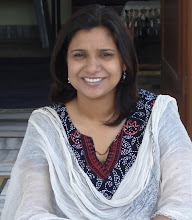The left parties & organizations want a cap on interest rates.Besides the left parties In recent months various organizations havechallenged the notion that micro credit is a tool for empowerment.
Nirantar, a Delhi-based women's resource centre has organized womensummits, media campaigns, led delegations to the Finance Ministeretc. to oppose the proposed MF Bill. It also raises the fundamentalissue of why subsidy as a right (for instance agricultural subsidy)is being taken away and credit given as a burden. Moreover, the cashorientation of micro-credit is located in an analysis ofexploitative usury arrangements, rather than being located in ananalysis of the breakdown of food security or mutuality of villagesystems.
Nirantar in its interaction with SHGs in Gujrat, Uttar Pradesh &Kerela has found that when micro-credit becomes central, themodalities of financial transactions consume the SHGs. There isexcessive focus on records and bookkeeping. Health, education, andwomen's personal needs become marginal to this process. The `happy'face of micro-credit is that women are a conduit for bringing creditto the family, but the `sad' face is that women are burdened withloan repayment.According to them, ironically, in most of the schemes, women's ownmoney is locked up, and they are forced to take a loan against theirown savings at a higher interest. NGOs have become collecting agentsfor banks that are trying to increase their penetration of credit.But this penetration is only creating more dependence. Back-to-backlending ensures that women are continuously in debt and have toundergo the stress of repayment.
The myth that micro-credit will empower women or enable povertyalleviation has been propagated by international agencies to drawpeople into a market economy based on cash or credit. It is alsoa `win-win' scheme promoted by a State that is increasinglywithdrawing from its development and welfare responsibilities. Themicro-credit approach implies that it is people's own responsibilityto lift themselves out of poverty – an impossible goal in thepresent economic paradigm.According to the organization, Micro lending cannot change macrostructures. It does create space for women, more mobility andexposure, but this is in the restricted framework and a pre-setagenda, not a transformative framework.
I think mF practioners at all levels need to deal with thesequestions. Should there be ceiling or rather an upper limit fixed oninterest rates? Does the women's need become marginal to the savings& credit process? Do the SHGs act as support networks that enablethem to advance their individual and collective interests at thelocal as well as macro level?

No comments:
Post a Comment